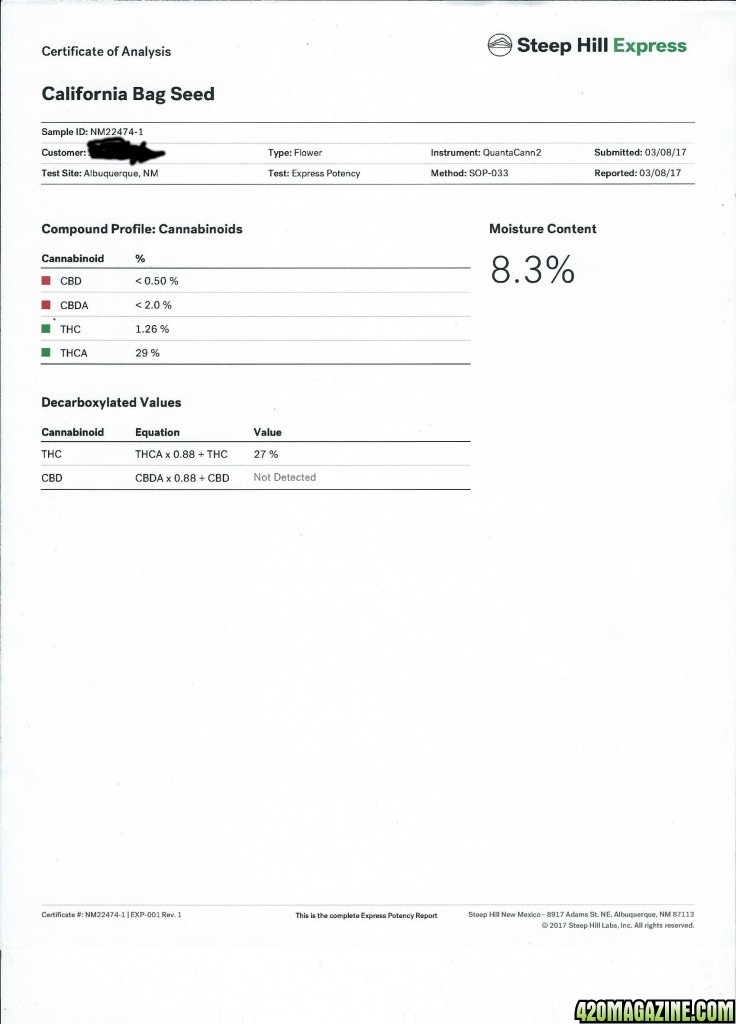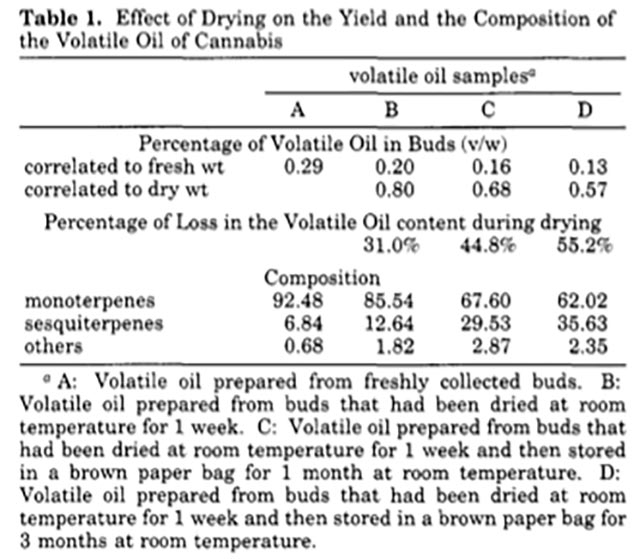Came across this today:
What Does Drying Buds Do to Terpenes? – High Times
Sirius J
4-5 minutes
Over at the University of Mississippi, the only place in the United States that’s legally allowed to grow pot as far as the federal government is considered, they’ve been doing research on cannabis since 1968. Most of that research aims to reinforce the federal government’s stance on marijuana, but that doesn’t mean there’s not room to take advantage of the knowledge they’ve been gathering.
One such study they submitted in 1995, The Volatile Oil Composition of Fresh and Air-Dried Buds of Cannabis sativa, is a perfect example. According to the authors:
The recognition of the smell by law enforcement officers has recently been challenged in courts by the defense in criminal cases. The purpose of this paper is to identify the major components of the essential oil of cannabis and to study the effect of drying and storage of the plant material on the stability of the characteristic components of the oil odor.
An interesting premise, but their findings give growers and extract artists the opportunity to look at what exactly drying and curing do to the terpene content of our favorite plant.
So here’s what they did: They harvested 60 grams of buds from the same plant and grouped them into four categories of 15 grams each: one was kept fresh (A), the second was dried at room temperature for a week (B), the third was dried at room temperature for a week then stored in a brown paper bag for one month (C), and the fourth was dried for a week then stored in a brown paper bag for three months (D). The four allotments were steam-distilled, and the resulting oil was analyzed chemically and a yield was calculated for each. Steam-distillation extracts just the oils (terpenes) that give cannabis its smell, and nothing else.
The major components were myrcene (hoppy smell) and limonene (citrus smell), with linalool (lavender, citrus smell) and caryophyllene (strong peppery smell) being relatively significant players as well. Fresh buds obviously had the largest terpene content, but only during the first week did most of the terpenes evaporate; after that the terpene loss plateaued.
Their findings show that drying changes the relative concentration of terpenes in the oil. Smaller, lighter terpenes (monoterpenes) like myrcene and limonene evaporated faster. Bigger, heavier terpenes (sesquiterpenes) like caryophyllene don’t evaporate as quickly, and represent a larger percentage of the oil after drying.
In summary, if you want the full terpene content in your oil, extract it from fresh frozen buds, but keep in mind that moisture in the buds prevents the butane from dissolving everything it needs to dissolve.
If you’re going to dry the pot, you might as well dry and cure it all the way because most of the terpenes are lost during the first week, and the loss stabilizes after that. The terpene loss isn’t homogeneous; drying will likely lead to a more peppery-smelling oil, since caryophyllene will make up a larger percentage of the oil. There will be considerably less myrcene after drying, but limonene stays relatively constant.
Both myrcene and caryophyllene hit cannabinoid receptors, so different proportions of them will also change the psychoactive effect of your oil. How exactly do they affect the high? We don’t know yet for sure, but we hope to do some experiments in the near future.
What were the findings for the researchers at the University of Mississippi?
To evaluate the odor of the different oils, technicians experienced with marijuana smell were asked to identify the smell of the individual oils. The subjects were able to recognize the smell of all oils as that of marijuana.
They all smelled like weed. What a fascinating conclusion.




 . i believe with all this info, anyone can learn to do a near precise decard for any cannabis application
. i believe with all this info, anyone can learn to do a near precise decard for any cannabis application



